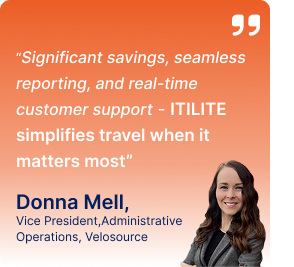
Construction teams work in some of the most demanding environments, managing unpredictable conditions, strict deadlines, and fluctuating labor and material costs. Every project is a balancing act between time, quality, and budget. While materials and labor tend to get the most attention, one area quietly drives up costs behind the scenes: inefficient expense management.
The expense management process is often broken from the ground up:
- Crews and foremen are focused on building, not tracking every receipt or chasing down approvals
- Finance teams struggle to reconcile incomplete data, enforce policy, and forecast accurately
- This disconnect creates blind spots in project accounting, increases overhead, and frustrates everyone involved
The solution lies in adopting a smarter, streamlined, and integrated approach that:
- Eliminates bottlenecks
- Supports mobile workers
- Delivers real-time visibility
In this blog, we’ll explore how to transform construction expense management using digital tools, with a special focus on mobile expense capture, corporate card control, and integrated corporate travel and spend platforms like itilite.
The True Cost of Poor Expense Management
The numbers speak for themselves. Studies show that 9 out of 10 construction projects face cost overruns, with the average project exceeding its budget by 15% to 28% [1]. While some of this is due to external factors like supply chain volatility, a significant portion comes from internal inefficiencies, particularly around expense tracking and cost estimation.
Key statistics reveal the impact:
- Up to 32% of cost overruns are directly tied to inaccurate estimations [2]
- Many estimation errors stem from poor expense documentation and a lack of real-time visibility
- When expense data isn’t captured accurately or promptly, it undermines financial forecasting
- Poor tracking distorts project profitability and increases reconciliation errors
Beyond financial losses, traditional expense processes introduce operational drag:
- Foremen waste hours on manual logging and chasing paper trails.
- Approvals are delayed, impacting reimbursements and delaying jobsite purchases.
- Audits become difficult with incomplete or inconsistent documentation.
- Teams get frustrated, especially when expenses aren’t reimbursed on time.
When these issues happen daily across multiple projects, the cumulative impact is substantial.
6 Steps to Simplify Travel and Expense for Construction Crew
1. Make Expense Capture Simple and Mobile-Friendly
Expense management starts at the point of purchase. That’s often a foreman at a hardware store, buying materials or fuel, with little time to spare. Traditional systems that rely on spreadsheets, physical receipts, or desktop portals are simply not designed for that reality.
What’s needed is a mobile-first solution that allows foremen and crew members to quickly and accurately record expenses without disrupting their workflow. Platforms like itilite allow users to:
- Snap and Submit: Foremen can take a photo of a receipt using their smartphone. OCR (optical character recognition) instantly extracts the amount, vendor, date, and line items.
- Categorize Instantly: Expenses can be tagged to the appropriate project, cost code, or department, ensuring proper allocation.
- Capture Petty Cash: Even small out-of-pocket expenses can be logged digitally, reducing paperwork and ensuring every dollar is tracked.
When workers can capture expenses in real time with just a few taps, accuracy goes up, administrative overhead goes down, and compliance becomes seamless.
2. Eliminate Reimbursement Delays with Authorized Company Cards
One of the biggest friction points in construction expense management is the reimbursement cycle. Employees often have to pay out of pocket, submit paperwork, and wait weeks to get reimbursed, sometimes even longer if there are errors or missing information.
The smarter approach is to issue corporate cards with pre-configured spending controls and real-time tracking. These aren’t blank checks, they’re smart tools that give finance teams control while giving crews the freedom to get what they need.
itilite enables:
- Card Authorization Rules: Cards can be authorized for specific categories (e.g., fuel, materials), with daily or weekly limits.
- Real-Time Visibility: Every card swipe appears instantly in the expense management system, categorized and linked to a project.
- Policy Enforcement: Transactions outside the allowed parameters are flagged or declined automatically.
This approach reduces personal financial strain on workers, minimizes reimbursement processing, and helps the company maintain tighter control over project budgets.
3. Automate Approvals to Keep Projects Moving
Approval delays are a major source of frustration and cost. In fast-paced environments like construction, time-sensitive purchases can’t wait days for sign-offs. But finance still needs oversight to prevent waste or fraud.
With automated approval workflows, companies can strike the right balance. Digital platforms let you:
- Build Approval Rules: Set automatic routing based on amount, department, or project. Small routine purchases can auto-approve, while high-value spends go to a manager.
- Enable Mobile Approvals: Project managers can approve expenses from anywhere, whether they’re in the office or on-site.
- Get Instant Notifications: Everyone in the chain gets alerts, so no request falls through the cracks.
This automation cuts down on back-and-forth, speeds up purchasing, and ensures field teams aren’t left waiting for green lights.
4. Get Real-Time Visibility and Control Over Spend
Expense data isn’t just for accounting; it’s a critical part of managing project profitability. Yet too often, that data is scattered, delayed, or siloed in spreadsheets.
With integrated expense management platforms like itilite, construction leaders get access to:
- Live Dashboards: See current spend by project, team, or vendor.
- Budget Tracking: Monitor actuals against forecasts to spot overages before they spiral.
- Custom Reports: Generate reports for audits, tax filings, or vendor negotiations in minutes.
When all expenses, corporate card, reimbursable, petty cash, and corporate travel, flow into one system, teams gain the clarity to make faster, better decisions..
5. Streamline Reconciliation and Reimbursements
End-of-month reconciliation is one of the most painful parts of the finance workflow. Matching receipts, chasing down missing expenses, and correcting miscodes takes hours, if not days.
Modern solutions simplify this process dramatically:
- Automatic Matching: Expenses are matched against card transactions or bank feeds in real time.
- Payroll Integration: Reimbursements can be pushed directly into payroll systems for fast, accurate payment.
- Audit Trails: Every action is logged, from submission to approval to reimbursement, making audits simple and transparent.
By automating reconciliation, finance teams can reclaim hours each month and shift their focus from fixing errors to improving cost control.
6. Bring Travel, Cards, and Expenses Into One Integrated Workflow
Many construction companies handle corporate travel, expense management, and corporate card management in separate systems. That’s a recipe for:
- Duplication of effort
- Confusion about policies and procedures
- Missed insights about total project costs
Platforms like itilite bring all three into a single ecosystem:
- Travel Booking Integration: Book flights, hotels, and rental vehicles within policy, with built-in cost control.
- Card Spend Visibility: Corporate card transactions auto-feed into expense reports with matching receipts.
- Unified Analytics: View total project corporate travel and expense costs in one dashboard, not across disconnected tools.
This level of integration gives finance leaders a holistic view of spend, essential for accurate forecasting, risk management, and compliance.
Calculate your savings now!
How itilite Simplifies Travel and Expense with Smart Controls and Virtual Cards
In the construction industry, crews are constantly moving between sites, making ad-hoc purchases, booking last-minute business travel, or needing quick access to project-specific resources. Traditional reimbursement workflows and loosely monitored card usage often lead to confusion, delays, and even spend leakage.
itilite solves this with an integrated, policy-driven platform that brings corporate travel booking, expense management tracking, and spend control into one streamlined workflow, built for mobility, speed, and accuracy.
Here’s how itilite transforms the process:
1. Authorized Virtual Cards for Smart, Secure Spending
- Instant Issuance: Employees receive corporate cards instantly, assigned per project, role, or trip.
- Predefined Controls: Each card comes with spend limits, merchant restrictions, and expiration dates, ensuring policy compliance at the transaction level.
- One-Time Use: Cards can be generated for single-use purchases (like a hotel booking).
- Real-Time Visibility: Every transaction appears in the system instantly, tagged to the right cost center, with receipts automatically matched.
This eliminates the need for foremen to use personal cards, reduces reimbursement wait times, and prevents overspending before it happens.
2. Unified Travel Booking and Expense Management
- Book Within Policy: Flights, hotels, and cabs can be booked through itilite’s platform with company policies enforced at checkout.
- Built-In Approvals: Corporate travel and expenses route through smart workflows, no emails or manual follow-ups needed.
- Automatic Data Capture: Booking details are pulled directly into expense reports, so there’s no need to re-enter data.
- Travel + Spend Insights: itilite provides a 360° view of business travel costs across projects, helping finance teams optimize budgets.
3. Effortless On-the-Go Experience
- Mobile-First Design: Employees can book corporate travel, log expenses, and access cards from their phone, ideal for field teams.
- Offline Compatibility: Even in low-connectivity zones, users can store expenses and upload them later.
- Paperless Process: Snap a photo, submit the expense, and move on, no more lost receipts or manual spreadsheets.
Conclusion: Build Smarter, Not Slower
In today’s competitive construction industry, managing costs isn’t optional; it’s critical. Poor expense managementt doesn’t just eat into margins; it creates unnecessary friction for crews, slows down projects, and leaves leadership in the dark.
By embracing tools like itilite, companies can modernize their approach to expense management, making life easier for crews and foremen while gaining the financial control and visibility they need to scale confidently.
From mobile expense capture to corporate card authorization, automated workflows to integrated business travel spend, the path to smarter construction expense management is clear.
The future isn’t more paperwork. It’s smarter systems that keep your field teams focused on building, and your back office focused on growth.
Implement mobile-first expense capture and automated approval workflows to eliminate manual processing overhead.
Field workers struggle with manual receipt management, delayed approvals, and disconnected systems that create data silos.
Workers snap photos of receipts using smartphones, with OCR technology automatically extracting vendor, amount, and date information.
Corporate cards eliminate reimbursement delays, provide real-time spend visibility, and enforce policy compliance automatically.
Set up rule-based workflows that auto-approve routine purchases while routing high-value expenses to managers for review.
Mobile capture, real-time reporting, automated approvals, corporate card integration, and project-based cost allocation.
Provides immediate budget visibility, prevents cost overruns, and enables data-driven decision making throughout the project lifecycle.
Studies show up to 32% of cost overruns stem from inaccurate expense tracking and poor financial visibility.
Use mobile apps that allow instant receipt capture, automatic categorization, and one-tap submission to eliminate paperwork.
Companies typically see 60-80% reduction in processing time and 15-25% improvement in expense policy compliance.
Virtual cards are issued instantly with preset spending limits and merchant restrictions, providing secure, controlled purchasing power.
Implement automated policy enforcement, real-time spend monitoring, and mobile-friendly submission processes.
Use unified platforms that combine business travel booking, expense tracking, and corporate card management in one system.
Digital systems provide audit trails, eliminate lost receipts, and offer better fraud detection than paper-based processes.
Real-time expense data enables accurate budget tracking, variance analysis, and improved forecasting for future projects.
Relying on manual processes, delayed expense submission, lack of mobile access, and disconnected approval workflows.
Implement automated matching, payroll integration, and digital approval workflows to eliminate manual reconciliation steps.
OCR automatically extracts data from receipt photos, eliminating manual data entry and reducing errors by up to 90%.
Unified platforms eliminate data silos, reduce duplicate entry, and provide comprehensive spend visibility across all categories.
Mobile apps with offline capability allow expense capture even in low-connectivity areas, syncing data when connection is restored.
Processing time, policy compliance rates, reimbursement cycle time, and administrative cost per expense report.
Real-time access from anywhere, automatic updates, scalability, and reduced IT infrastructure requirements.
Automated audit trails, policy enforcement, and standardized reporting ensure regulatory compliance and reduce audit risks.
AI algorithms analyze merchant data, purchase patterns, and historical categorization to automatically assign expenses to appropriate cost centers.
Digital platforms allow logging of small cash purchases with photo receipts, maintaining complete expense visibility.
Real-time spend controls, merchant restrictions, automatic receipt matching, and integration with expense management systems.
Automated categorisation, digital receipt storage, and standardised reporting simplify tax preparation and audit processes.
Increased adoption rates, faster submission times, reduced administrative burden, and improved data accuracy.
Implement automated policy enforcement, real-time monitoring, digital approval workflows, and comprehensive audit trails.
Seamless connection with accounting systems, payroll software, project management tools, and banking platforms.
Advanced platforms allow expenses to be split across multiple projects with customizable allocation rules and cost codes.
Real-time dashboards, custom reports, budget variance analysis, and automated compliance reporting for stakeholders.
Implement real-time policy enforcement, provide mobile-friendly guidelines, and use automated approval workflows.
Reduces processing time by 70-80%, eliminates manual errors, and provides real-time financial visibility.
Modern platforms automatically convert currencies, apply current exchange rates, and handle multi-currency reporting requirements.
Automatic data backup, redundant storage, and quick recovery capabilities ensure business continuity during emergencies.
Dedicated contractor portals allow external workers to submit expenses while maintaining security and compliance controls.
Spend pattern analysis, budget forecasting, vendor performance metrics, and cost optimization recommendations.
Digital platforms store receipt images securely in the cloud with OCR data extraction and searchable metadata.
Automated routing, approval notifications, policy enforcement, and exception handling reduce manual intervention requirements.
Specialised categorisation, project allocation, and vendor management features help track and control equipment costs.
Immediate alerts for policy violations, budget overages, and approval requirements keep projects on track financially.
GPS integration, automatic route calculation, and IRS-compliant mileage rates simplify vehicle expense management.
Configurable approval workflows, custom expense categories, project-specific rules, and branded user interfaces.
Dedicated fuel card integration, automatic odometer tracking, and vehicle-specific expense categorization streamline fleet management.
Modern platforms feature intuitive interfaces requiring minimal training, with built-in help guides and video tutorials.
Flexible user management, project-based access controls, and scalable pricing accommodate seasonal workforce changes.
Paperless processes, reduced printing, and digital receipt storage significantly decrease environmental impact.
Track metrics like processing time reduction, policy compliance improvement, cost savings, and user satisfaction scores.
AI-powered analytics, predictive budgeting, IoT integration, and blockchain-based audit trails will transform expense management.








